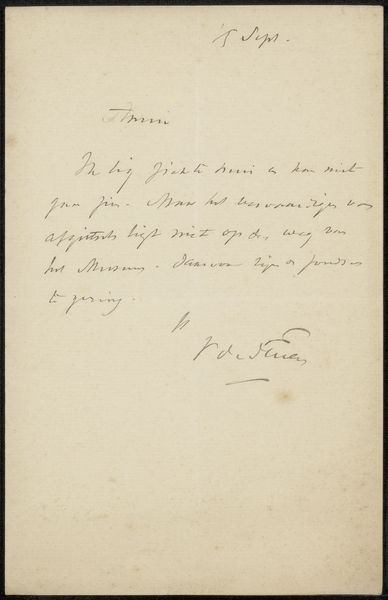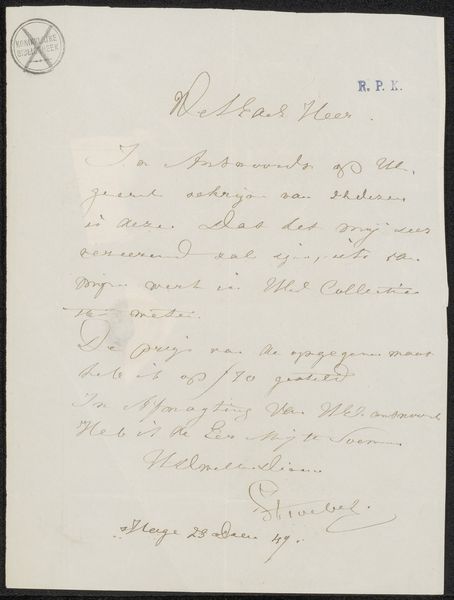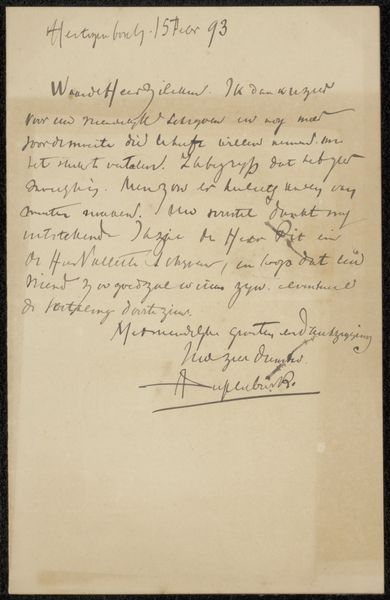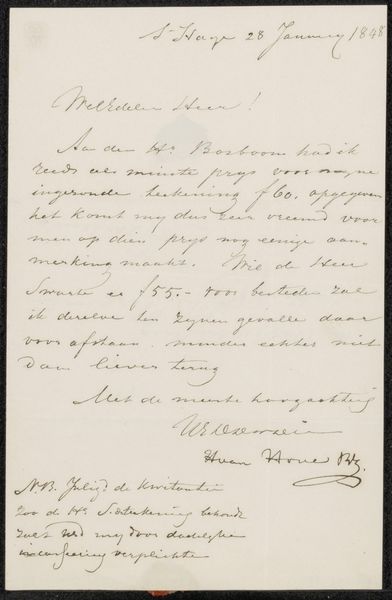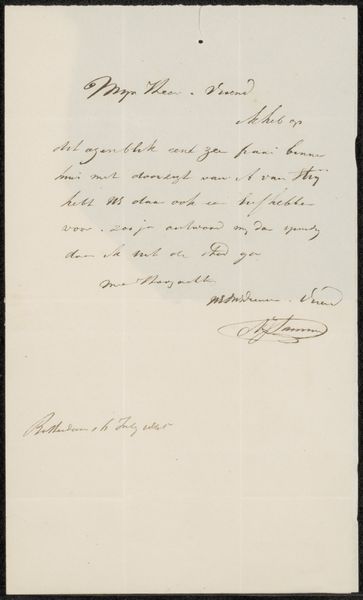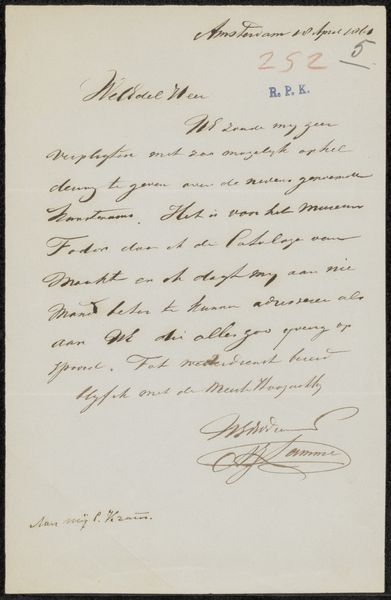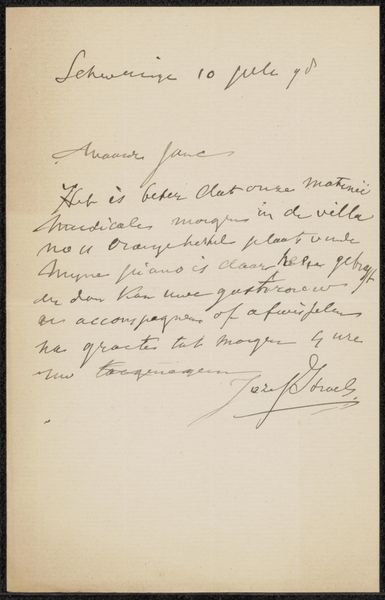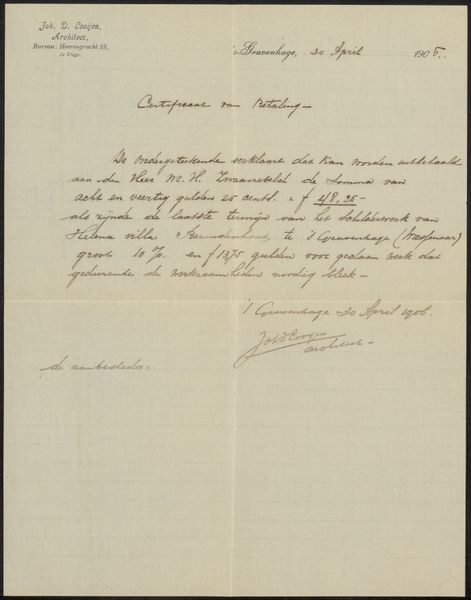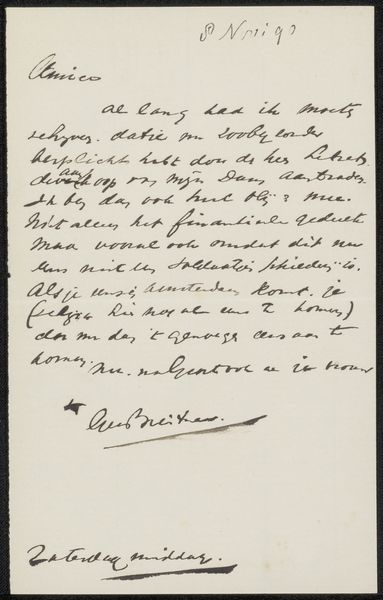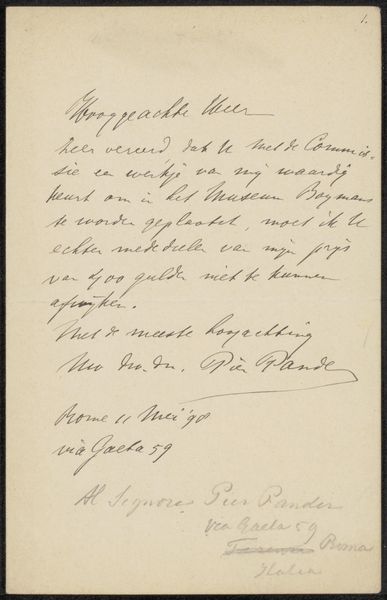
Brief aan Frans Buffa en Zonen Possibly 1873 - 1877
0:00
0:00
Copyright: Rijks Museum: Open Domain
Editor: This is a letter from Julius Jacobus van de Sande Bakhuyzen to Frans Buffa en Zonen, likely from the 1870s. It's done with pen and ink on paper. The script itself feels quite delicate, almost ephemeral. How do you interpret this work? Curator: Well, consider the labour involved. Before mass production, handwriting, especially of this calligraphic quality, held immense social value. This letter, with its cost estimates—seemingly referencing a price of 300—becomes evidence of a transactional relationship. A price point. It elevates correspondence to the level of a valued good. Editor: So you're saying the *act* of writing, the material process itself, gives the letter meaning? Curator: Precisely! The ink, the paper – these are not just passive supports. They're integral to the artwork's meaning, products of a specific social context and mode of production. And look closely; the deliberate, practiced hand challenges the boundary between utilitarian communication and crafted object. It forces us to think about Van de Sande Bakhuyzen's relationship with his patrons and how labor becomes part of the artwork's worth. The pen work is also its worth! Editor: I never really thought about letter writing this way before; considering it through labor, materiality and economy changes how I look at everyday forms of writing and the work that makes culture! Curator: Indeed, and it challenges our preconceived notions of what constitutes "art" in the first place. Materiality dictates process, making and consumption.
Comments
No comments
Be the first to comment and join the conversation on the ultimate creative platform.
